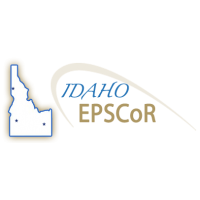The intended use of these data are for studies that require predictions of future temperature and precipitation conditions in the contiguous United States.
This data series contains 2868 temporal datasets. These data are climate model outputs that have been downscaled to 4-km spatial resolution using the Bias Corrected Statistical Downscaling (BCSD) method. Moore and Walden have modified the BCSD method described by Wood et al (2002), Long-range experimental hydrologic forecasting for the eastern United States. Journal of Geophysical Research-Atmospheres 107: 4429-4443 and Salathe (2005), Downscaling simulations of future global climate with application to hydrologic modeling. International Journal of Climatology 25: 419-436. The modifications include a different interpolation scheme between GCM grid cells and a different approach to dealing with extreme values (Z-scores versus CDF method). The spatial resolution of these data are determined by the historical dataset used to derive statisitcal relationships between the GCM and past measurements. The 4-km Parameter-elevation Relationships on Independent Slopes Model (PRISM) data are used here from Daly et al, (1994), A statistical-topographic model for mapping climatological precipitation over mountainous terrain. Journal of Applied Meteorology 33: 140-158.
Access constraints: Data will be provided to all who agree to appropriately acknowledge the National Science Foundation (NSF), Idaho EPSCoR and the individual investigators responsible for the data set. By downloading these data and using them to produce further analysis and/or products, users agree to appropriately acknowledge the National Science Foundation (NSF), Idaho EPSCoR and the individual investigators responsible for the data set.
Use constraints: Acceptable uses of data provided by Idaho EPSCoR include any academic, research, educational, governmental, recreational, or other not-for-profit activities. Any use of data provided by the Idaho EPSCoR must acknowledge Idaho EPSCoR and the funding source(s) that contributed to the collection of the data. Users are expected to inform the Idaho EPSCoR Office and the PI(s) responsible for the data of any work or publications based on data provided.
Liability: Although these data have been processed successfully on a computer system at the Idaho Geospatial Data Clearinghouse, no warranty, expressed or implied, is made regarding the utility of the data on any other system, nor shall the act of distribution constitute any such warranty.
Data and Resources
| Field | Value |
|---|---|
| Modified | 2019-03-19 |
| Release Date | 2015-06-09 |
| Publisher | |
| Identifier | 1313e0bd-6cfd-457f-8d46-d6adc2928d16 |
| Spatial / Geographical Coverage Area | POLYGON ((-125.33203125 24.897064027876, -125.33203125 49.189361030177, -66.62109375 49.189361030177, -66.62109375 24.897064027876)) |
| Spatial / Geographical Coverage Location | USA |
| Temporal Coverage | Sunday, August 1, 2010 - 00:00 |
| Language | English (United States) |
| License | |
| Granularity | 4 kilometers |
| Author | |
| Contact Name | Von P. Walden |
| Contact Email | |
| Public Access Level | Public |
| DOI | 10.7923/G4H41PB6 |


![[Open Data]](https://assets.okfn.org/images/ok_buttons/od_80x15_blue.png)